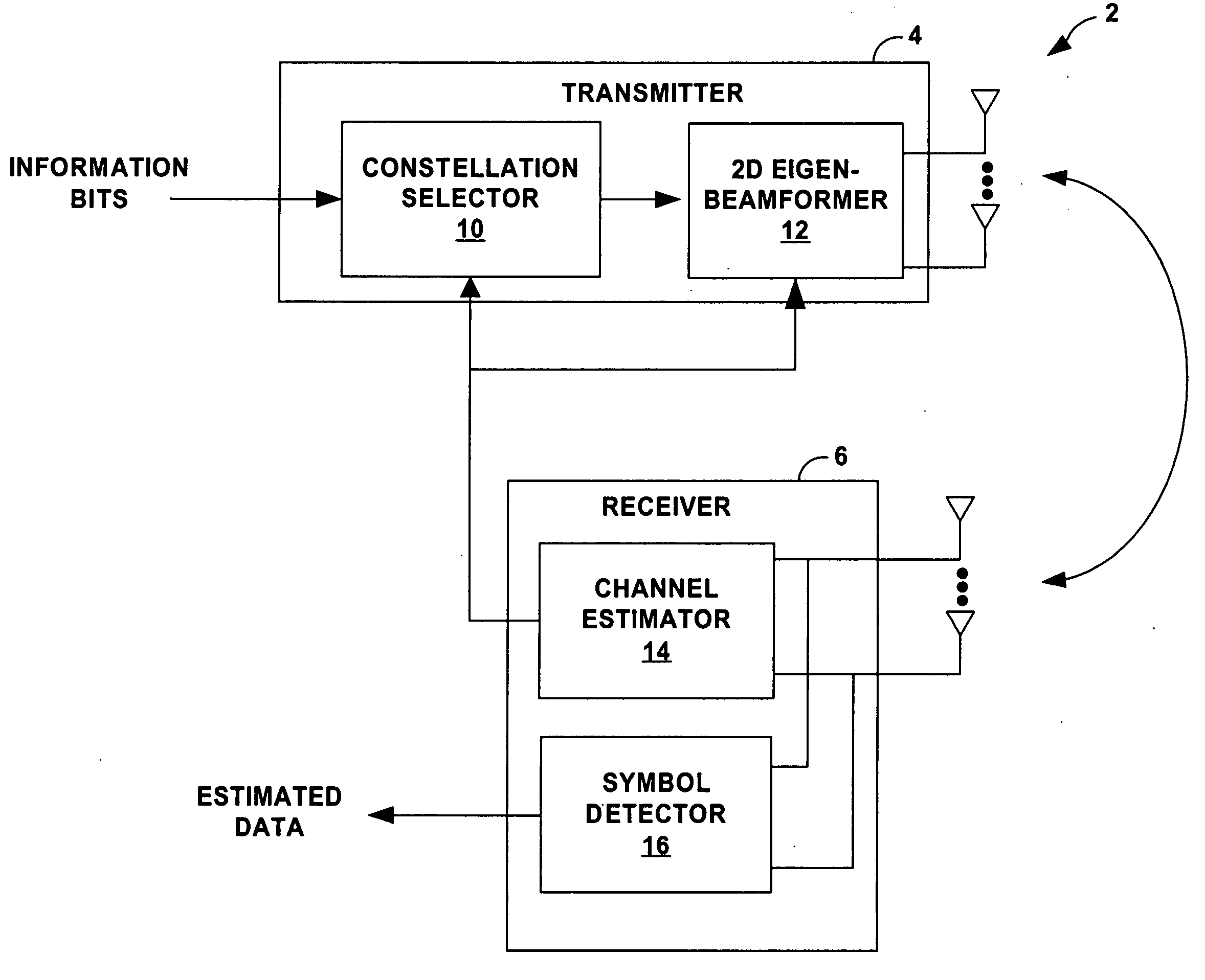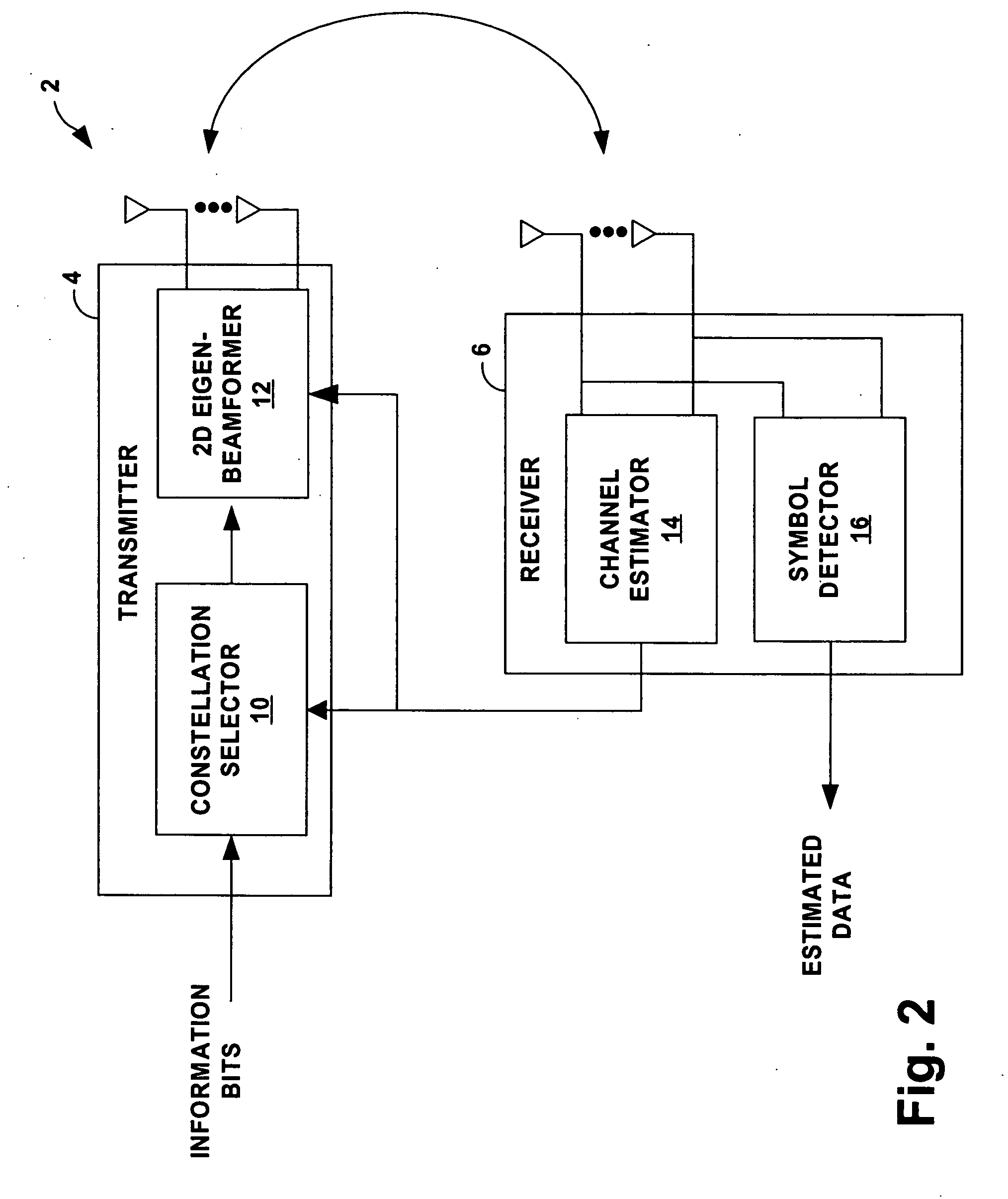Adaptive modulation for multi-antenna transmissions with partial channel knowledge
- Summary
- Abstract
- Description
- Claims
- Application Information
AI Technical Summary
Benefits of technology
Problems solved by technology
Method used
Image
Examples
examples
We set K=64, L=5, and assume that the channel taps are i.i.d. with covariance matrix ∑μ v =1L=1IL=1
We allow for both rectangular and square QAM constellations in the adaptive modulations stage. Let the average transmit-SNR (signal to noise ration) across subcarriers is defined as: SNR=PtotalTs / (KN0). The transmission rate (the loaded number of bits) is counted every two OFDM symbols as: ∑k=0K-1 2b[k].
Comparison Between Exact and Approximate Solution
Typical MIMO multipath channels were simulated with Nt=4, Nr=2, and N0=1. For a certain channel realization, assuming 2D beamforming on each subcarrier, FIG. 13 plots the thresholds d02[k] obtained via numerical search, and from the closed-form solution based on eq. (65), with p=0.5, 0.8, 0.9 and a target BER=10−3. FIG. 14 is the counterpart of FIG. 13, but with target BER=10−4. The non-negative eigenvalues λ1[k] and λ2[k]of the nominal channels are also plotted in dash-dotted lines for illustration purpose. Observe that ...
PUM
 Login to View More
Login to View More Abstract
Description
Claims
Application Information
 Login to View More
Login to View More - R&D
- Intellectual Property
- Life Sciences
- Materials
- Tech Scout
- Unparalleled Data Quality
- Higher Quality Content
- 60% Fewer Hallucinations
Browse by: Latest US Patents, China's latest patents, Technical Efficacy Thesaurus, Application Domain, Technology Topic, Popular Technical Reports.
© 2025 PatSnap. All rights reserved.Legal|Privacy policy|Modern Slavery Act Transparency Statement|Sitemap|About US| Contact US: help@patsnap.com



